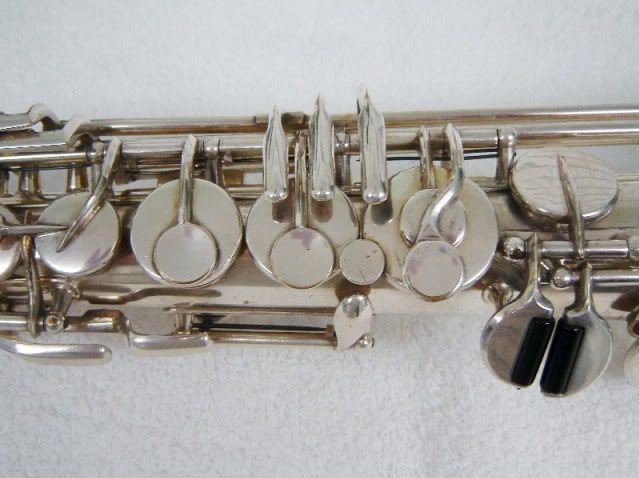- Joined
- Feb 17, 2009
- Location
- Munich, Germany
Any thoughts on using an 870/435 pitch sax at 440 ? I was guessing if I tuned it round about G, I could probably play it in tune, or am I expecting too much?
Any thoughts on using an 870/435 pitch sax at 440 ? I was guessing if I tuned it round about G, I could probably play it in tune, or am I expecting too much?
5. Don't believe everything you read on an internet forum, including my own posts. many advisors are parroting information that they read in books, and they have no real life experience. The real fun is finding out for yourself what works.
It's not all that difficult to bring the short tube notes down a good bit, at the expense of a bit of venting as the tone hole diameter is decreased.That leaves you pushing in with short tube notes getting sharp. Nothing to do about that--it's based on hole positions. A good mpc match should give you true octaves, but it might happen that a smaller chamber piece pulled out farther will bring the second octave short tube notes down--probably not a bad idea to shorten the second register long octave. That's what theory predicts, but in real life there are many factors in play that make that a simplistic prediction...

I feel your pain, or pining. Not necessarily for saxes, but for old honkers in general. New instruments may have better ergos and all, but they lack history...Why? Cos I'm a sucker for old saxes. New ones don't excite me. I'm like that with a lot of things - cameras, cars... And the mouthpiece would be a period match for one of my two Kohlert altos from the 30s.
I'd ask Helen about it, as she's the expert on Germanic horns, but I kinda doubt the A=435 comment. If it had any odd intonation standard, it'd be more likely that it'd be high pitch, A=457hz. I've not heard of any Germanic saxes with A=435.It was this one:
http://www.ebay.de/itm/251021986681?ssPageName=STRK:MEWAX:IT&_trksid=p3984.m1423.l2649
but it got too expensive, even for here. It needs a repad if I read his German properly, looks like it's worse than mine (seller says needs new Stempel.... = needs new stamp(s)... and a spring). By the time I'd repadded it, it'd cost more than it's really worth.
Why? Cos I'm a sucker for old saxes. New ones don't excite me. I'm like that with a lot of things - cameras, cars... And the mouthpiece would be a period match for one of my two Kohlert altos from the 30s.
I was intending to play it at 440 - so the intention was to get a middling note (like G) in tune at 440 and bring the long octave back as I play.
Hadn't thought of the crescents, but they'd have helped.
You create itNew instruments may have better ergos and all, but they lack history...
